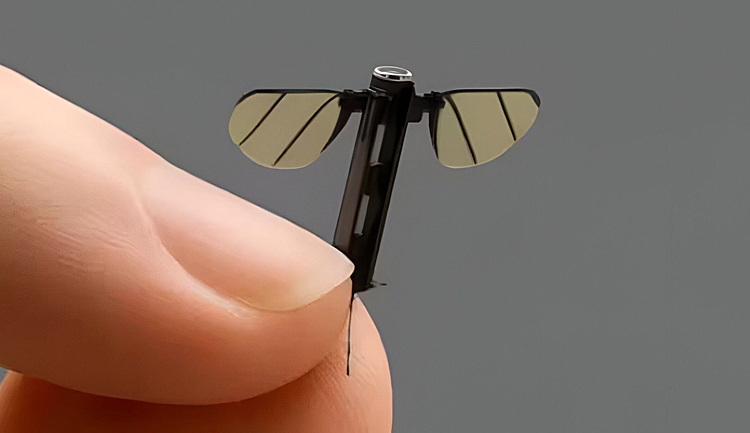INDIAN ARMED FORCES CHIEFS ON OUR RELENTLESS AND FOCUSED PUBLISHING EFFORTS

The insightful articles, inspiring narrations and analytical perspectives presented by the Editorial Team, establish an alluring connect with the reader. My compliments and best wishes to SP Guide Publications.

"Over the past 60 years, the growth of SP Guide Publications has mirrored the rising stature of Indian Navy. Its well-researched and informative magazines on Defence and Aerospace sector have served to shape an educated opinion of our military personnel, policy makers and the public alike. I wish SP's Publication team continued success, fair winds and following seas in all future endeavour!"

Since, its inception in 1964, SP Guide Publications has consistently demonstrated commitment to high-quality journalism in the aerospace and defence sectors, earning a well-deserved reputation as Asia's largest media house in this domain. I wish SP Guide Publications continued success in its pursuit of excellence.
- Appointments Committee of Cabinet approves one-month extension in service of Chief of the Army Staff
- Prime Minister witnesses 'Bharat Shakti' – a Tri-Services Firing and Manoeuvre Exercise in Pokhran, Rajasthan
- Interim Defence Budget 2024-25 — An Analysis
- Union Defence budget 2024
- Indian Army: In quest of greater firepower and policy recommendations for gaps
- Indian Army Annual Press Conference 2024
- Tata Boeing Aerospace Delivers 250 AH-64 Apache Fuselages, Manufactured in India
China's Bohai Monster, Rocket & Mini Drones
China unveils groundbreaking military and space technologies, signalling rapid advancements in strategic capabilities
 |
The Author is Former Director General of Information Systems and A Special Forces Veteran, Indian Army |

According to news reports of July 11, 2025, China has developed an experimental vehicle, nicknamed the 'Bohai Sea Monster'; something like the flying boats built by the Soviets during the cold war era. China has made no official announcement but China's social media is abuzz with this. The Bohai Sea Monster looks like something straight out of a Cold War era science fiction Hollywood movie; a combination between a ship and an aircraft, the vehicle has the speed of a stealth craft. The images have raised concerns among defence analysts, who suggest that Beijing is reviving a decades-old Soviet concept amid possible military confrontation with the US in the Pacific.
In the image shared on social media, the flying-boat-hulled aircraft is perched on a pier in the Bohai Sea with twin tail fins, and four jet engines mounted on its wings. The images were termed 'Ekranoplan'; The wing-in-ground effect (WIG) craft, dubbed the 'Bohai Sea Monster' or the Ekranoplan is a combination between a ship and an aircraft having the speed of a stealth. It flies just a few meters above water or a cushion of air using the aerodynamic interaction between the moving wing and the surface below. The Ekranoplans have the capability of moving faster than ships and cannot be easily detected due to their low radar profile. They are also more fuel-efficient than low-flying aircraft and are perfect to operate in challenging weather conditions. However, they possess limited manoeuvrability and rely on calmer seas to function properly.
China has developed an experimental vehicle, nicknamed the 'Bohai Sea Monster'; something like the flying boats built by the Soviets during the cold war era
The "Bohai Sea Monster" could play a major role in the Asia-Pacific. The craft, due to its high speeds reach hotspots like Taiwan or the South China Sea in about four hours and help in implementing China's plans of island seizures or blockades. Its capability of flying faster than ships without being easily detected due to their low radar profile can help in moving troops and supplies into contested areas quicker than expected. Naval analyst H. I. Sutton shows images of China's secret project Bohai Sea Monster (as also its Soviet predecessors) in a video, calling it a special military aircraft, and says China builds while other countries still explore concepts.
Concurrent media reports of July 9, 2025, state that 'Space Epoch', a pioneering Beijing-based company, has achieved a significant milestone in China's space exploration efforts with the successful test of its reusable rocket, 'Yuanxingzhe-1', marking a crucial step forward in the Chinese ambitious plans for space tourism, orbital infrastructure, and interplanetary exploration, including lunar and Martian exploration.
The groundbreaking test was conducted by 'Space Epoch' on May 29, 2025 at the China Maritime Space Launch Centre, located off the coast of Shandong Province. The test utilised Vertical Take-off, Vertical Landing (VTVL) technology, similar to SpaceX's Falcon 9 and Starship. This technique allows rockets to descend vertically using their own engines to slow and stabilise their descent, ultimately achieving a controlled landing. While Europe is making progress with reusable rocket technology, highlighted by the success of PLD Space's Miura 1 rocket, China's advancements in reusable rockets could democratise space access, fostering innovation and international collaboration.
A Beijing-based company, has achieved a significant milestone in China's space exploration efforts with the successful test of its reusable rocket
During the test, the Yuanxingzhe-1 rocket completed a 125-second flight. After a vertical take-off, it reached an altitude of approximately 8,202 feet at the peak of its trajectory, the rocket's engines temporarily shut off before re-igniting to initiate a controlled descent. This manoeuvre enabled the rocket to slow and stabilise its return, culminating in a water landing in the Yellow Sea, as depicted in a video shared by Space Epoch on its WeChat account. Space Epoch hailed this test as a "major breakthrough" in developing reusable liquid-fuelled rockets. In recent years, the global space race has taken a surprising turn as China makes significant strides in its space exploration capabilities. With the successful test of Space Epoch's reusable liquid-fuelled rockets, China can break the monopoly in space tourism of companies like SpaceX.
China has also developed a 'Cyborg Bee' according to news reports of July 11, 2025. A team led by Professor Zhao Jieliang at the Beijing Institute of Technology (BIT) has built the world's lightest insect brain controller, which can be strapped to a bee's back. The device, at 74 milligrams, is lighter than a sack of nectar that bees normally carry. It attaches to the brain of the insect with three needles and makes it follow directional commands using electronic pulses. During testing, the bee obeyed nine out of 10 times.
The study was published in the Chinese Journal of Mechanical Engineering. The Cyborg Bee could serve as military scouts or search for survivors in the ruins of an earthquake. "Insect-based robots inherit the superior mobility, camouflage capabilities, and environmental adaptability of their biological hosts," according to the study. The Cyborg Bee can also be employed for reconnaissance in urban combat, counterterrorism, and narcotics detection. Earlier, the lightest cyborg controller was developed in Singapore which was three times the weight of this new Chinese invention, which can also be used on insects like beetles and cockroaches although for the device to be effective, a long-lasting battery would be needed. According to Professor Zhao and his team, "In future research, precision and repeatability of insect behaviour control will be enhanced by optimising stimulation signals and control techniques."
China's National University of Defense Technology unveiled a mosquito-like spy drone designed for covert military operations

In June 2025, China's National University of Defense Technology unveiled a mosquito-like spy drone designed for covert military operations; according to news reports of July 7, 2025. The drone's size and weight could limit its uses on the battlefield but it can still prove to be an effective new surveillance tool. Showcased on China's state-run CCTV-7 military broadcaster, the micro-drone appeared to be roughly the size of a human fingernail and featured tiny, leaf-like wings and thin, wiry legs. Its stick-thin body is said to be equipped for a range of covert surveillance and military operations. Herb Lin, a senior research scholar at Stanford's Centre for International Security and Cooperation, told the media, "As a drone to survey buildings, especially on the inside, I can imagine it being quite useful for video feeds."
Samuel Bendett, an advisor with the Centre for Naval Analyses and drone expert, said. "Even indoors, there can be conditions that could interfere with this drones' performance, such as even a slight breeze, an air flow from an AC, an open window, or other obstacles." But Michael Horowitz, a senior fellow for technology and innovation at the Council on Foreign Relations, said it showed "Chinese researchers in particular want to push forward technological innovation in drones." However, the new mosquito-sized spy drone certainly signals China's continuing innovation in the sector.





